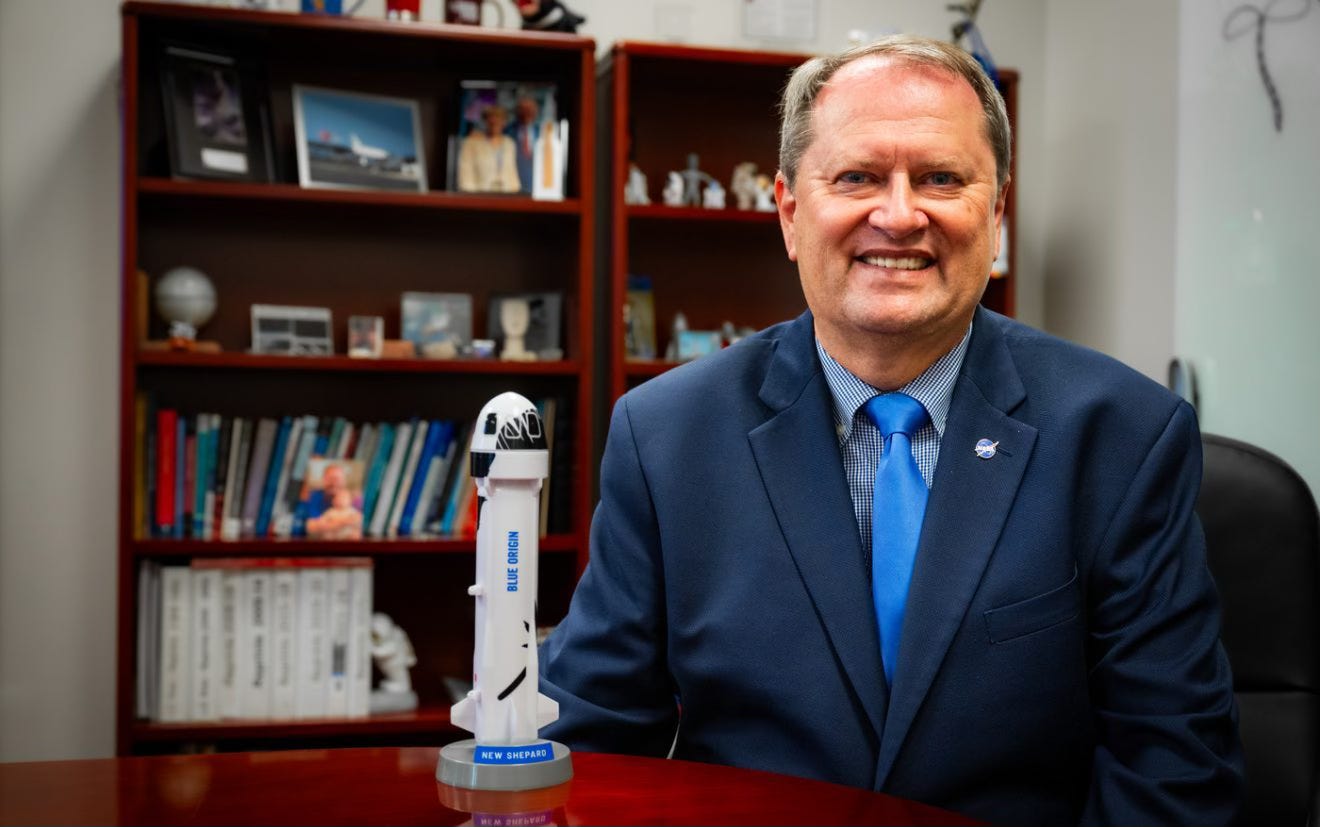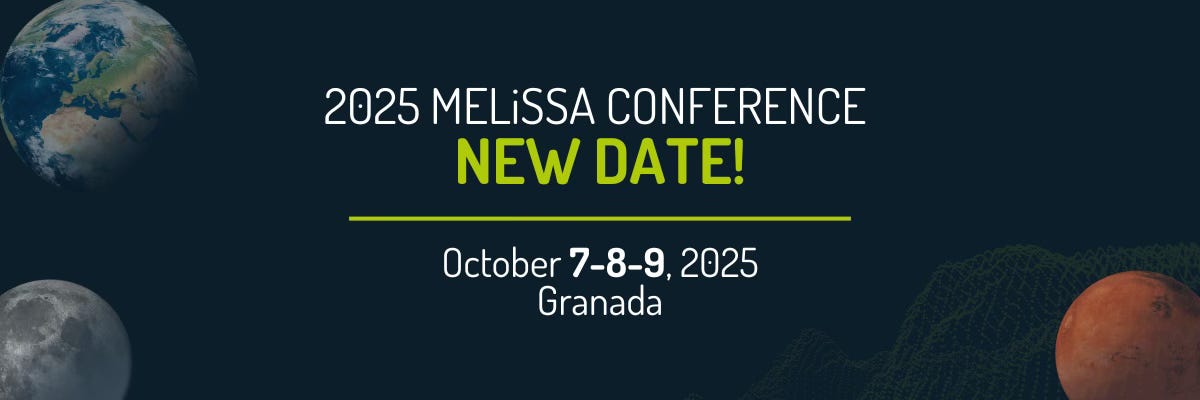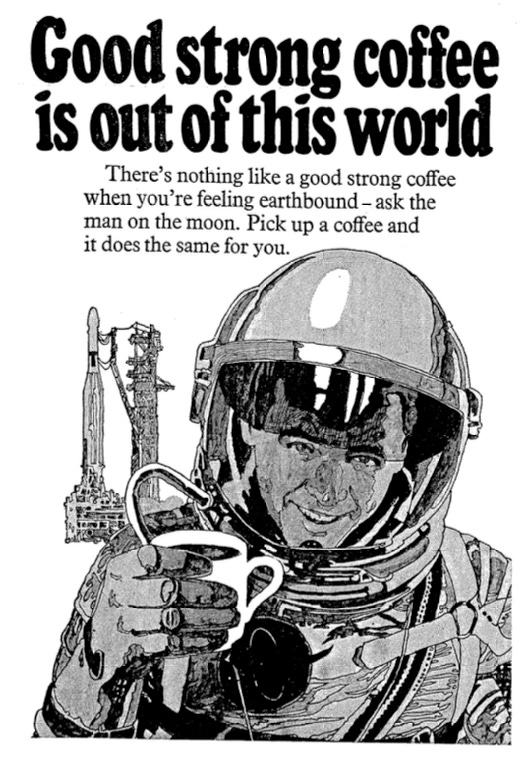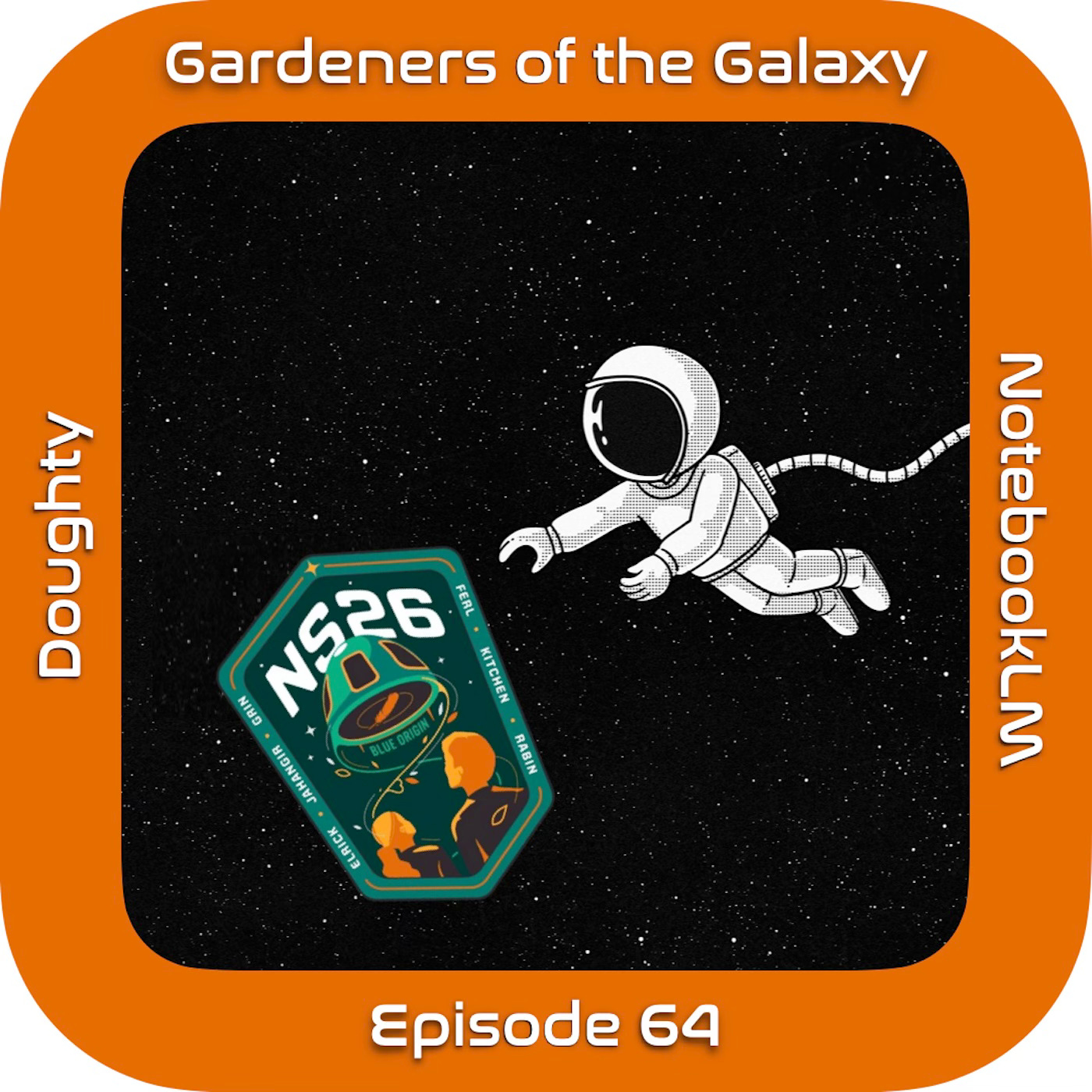Gardeners of the Galaxy Mission Report: 11 February 2025
Your weekly round-up of astrobotany news and adventure. This week we've got a new podcast episode, updates on NS-29 and MISSE-14 and news of upcoming events.
Hello, Gardeners of the Galaxy! Welcome to this week's Mission Report.
My first experience of using Google’s NotebookLM as an AI Mission Specialist left me with some questions, so I decided to give it another test. This time, I picked a commercial American mission that was a historic first for astrobotany. In August 2024, astrobotanist Dr Robert Ferl from the University of Florida flew on Blue Origin’s NS-26 mission, conducting a plant experiment during his sub-orbital flight.
Listen here: Revisiting NS-26 with NotebookLM (GotG64)
I’d love to hear your comments! And have you checked out my new Space Botany website yet? It’s got the show notes for this episode, and this week I’ve also added a post on the Choctaw seeds that flew to the International Space Station and will be planted here on Earth this spring, and a Diversity, Equity and Inclusionstatement.
In other news...

On 4th February, payloads on Blue Origin’s NS-29 mission experienced roughly two minutes of lunar gravity forces, thanks to the New Shepard capsule using its reaction control system to spin up to approximately 11 revolutions per minute.
One of those payloads was a collaboration between 4SPACE and astrobotanists John Z. Kiss (at Florida Tech) and Karl Hasenstein (at University of Louisiana at Lafayette), exploring fluid dynamics in lunar gravity.
On Earth, water distribution in plants and its percolation through soil is gravity-dependent, but we don’t know whether lunar gravity (about 1/6 g) is enough to maintain those processes.
“While we know a great deal about biology and fluid dynamics in microgravity, we know little about these processes in terms of the lunar gravity environment,” Kiss said. “This project presented a unique opportunity to test fluid dynamics in lunar gravity to gain insights into the cultivation of plants, which is important for bioregenerative life support on the Moon.”
“Water distribution in plants and its percolation, or absorption, through soil are processes that are essential for growth, and they are gravity dependent,” Hasenstein explained. “But we don’t know how water behaves at that reduced gravity, or how much percolation you’d see through the lunar regolith.”
Read more: Going for a Spin: Experiment to Experience Lunar Gravity From Rotating Capsule After Feb. 4 Launch and Blast off! Biologist Hasenstein digs into lunar gardening with latest space project
‘Materials International Space Station Experiment-14’ (MISSE-14) exposed a variety of materials to space, including 11 types of plant seeds. Researchers found that the plant seeds exposed to space germinated at the same rate as those kept on the ground. This finding shows that plant seeds can remain viable during long-term space travel and plants could be used for food and other uses on future missions.
Read more: Station Science Top News: Jan. 31, 2025
Upcoming Events

The Green Moon Project is giving a talk at the Surrey Space Centre in Guildford (UK) on 24th February, talking about the future of space agriculture. I expect it will be sold out by the time you read this, but you can find the details here.
Astrobotanist Simon Gilroy is giving an online lecture sponsored by the Ozaukee Master Gardeners at 7 pm (in CST, I think) on 27 February. Gilroy will explore how much plants ‘know’ about the world around them, exploring amazing sensory events using time lapse imaging and some of the latest visualisation techniques used by plant scientists. The talk is free to attend but you need to register.
Learn more: Are My Plants Listening to Me?
A new exhibition at Old Observatory Leiden and Hortus botanicus (Netherlands) brings two worlds together in a dazzling mix of science, nature and art. ‘Plants & Planets’ is about life on Earth: how it arose, what forms of life there are now and how these will look in the future and will be in place for five years.
Read more: From celestial bodies to plant bodies: exhibition brings together worlds of plants and planets
Many of the new satellites currently in Earth’s orbit are equipped to provide revolutionary tools and data to improve global food security and strengthen agrifood systems. A new report from the Food and Agriculture Organization of the United Nations (FAO) and the United Nations Office for Outer Space Affairs (UNOOSA) aims to inform and guide an array of experts and policy makers on the various intersections of space technology and farming, forestry and land-use management as well as climate and environmental trends.
Read more: Leveraging space technology for agricultural development and food security
China plans to send a flying robot to the far side of the Moon next year, as part of the Chang’e-7 mission, to search for the frozen water that could hold the key to future lunar exploration.
Read more: China plans to send a flying robot to search for water on the moon’s far side
Microbes, which have evolved on Earth to perform all manner of chemical transformations, could help astronauts make what they need from what’s already available at their destination, and to recycle waste. However, much is still unknown about how microbes will react to conditions in space, and even basic experiments can be tough to carry out.
Read more: Microbes in space: how bacteria could help sustain long-distance space travel
NASA’s Moon mining robot - the In-Situ Resource Utilization Pilot Excavator (IPEx) - is a dual-purpose machine, acting as both a bulldozer and a dump truck. Its key task would be to mine efficiently and transport lunar regolith – the loose rocky material covering the Moon’s surface. This regolith holds the potential to extract essential resources like hydrogen, oxygen, and even water.
Read more: NASA’s powerful moon mining robot could dig 10,000 kg of soil in a single lunar day
Burrowing under soil opens up a whole new world, especially when that soil is on other planets. Getting under the top layer of regolith on a world such as Mars could give access to a world still extant with life, whereas, on the moon, it could lead to discovering a water source.
Read more: Burrowing mole-bot could characterize other planets' soil
Meteorite falls are extremely rare and offer a glimpse of the processes that formed our world billions of years ago. When a space rock came to an English market town in 2021, scientists raced to find as much out as they could.
Read more: It came from outer space: the meteorite that landed in a Cotswolds cul-de-sac
Nasa's Glenn Research Center has signed an agreement with a company that wants to build the world's deepest pool in Cornwall for sea and space research.
Read more: Nasa onboard with world's deepest pool plans
It sounds like a scheme a James Bond villain might hatch: launching a giant mirror into orbit to harness the Sun's rays, then redirecting them to beam down on a target on Earth. Yet this was exactly what the Russian space agency Roscosmos attempted to do on 4 February 1993. But the more utopian goal of the Znamya project was "to light up Arctic cities in Siberia during the dark winter months". Essentially, it would try to switch the Sun back on again for Russia's polar regions after night fell.
And I’m including this one because I wrote it! ESA’s GAIA mission has discovered two new mysterious celestial objects – a ‘Super-Jupiter’ exoplanet, and Gaia-5b a brown dwarf - unexpectedly orbiting low-mass stars.
Read more: Wobbling stars reveal hidden companions in Gaia data

Rather than using sunlight, water, and soil to nurture fully-grown plants, firms using plant cell culture grow plant cells indoors in bioreactors fed on sugars, vitamins, minerals, and other nutrients. Now startups are using the technique to grow ‘real’ coffee and cocoa biomass, attracting the attention of global investors.
Read more: Is plant cell culture a scalable way to futureproof cocoa and coffee?
A dog treat made from lab-grown meat has gone on sale in the UK. The manufacturer, Meatly, said the chicken was produced from a single sample of cells taken from one chicken egg, from which enough cultivated meat could be produced to feed pets “for ever”.
Read more: Dog treat made from lab-grown meat on sale in UK as retailer claims a ‘world first’
Researchers at the Department of Energy's Oak Ridge National Laboratory have led the way in using a unique measurement tool to analyze plants, soil, and other biological samples. It's part of the work that scientists have done for more than a decade at the Center for Bioenergy Innovation (a DOE Bioenergy Research Center) to improve the growth of bioenergy crops.
As far as the eye can see is a hodge-podge of trees, vegetable plots and water tanks. Up close it may look like a gigantic allotment, but this unusual project actually stretches for 2,000 hectares (4,942 acres), a green belt that now completely rings the city of Ouagadougou.
Read more: ‘We water, rest, water’: the green belt of vegetable plots cooling a city
With a unique ability to consume nearly any form of organic matter it comes across, one small but mighty insect is becoming a tool to address the growing problem of organic waste and soil degradation. The bug, black soldier fly larvae (BSFL), transforms food waste into nutrient-rich biofertiliser: frass.
Read more: The little bug with a big appetite turning organic waste into sustainable fertiliser
Watch it!
I'll be back in your inboxes next week. Thanks for reading and being part of the Gardeners of the Galaxy community.
Ex solo ad astra,
Emma (Space Gardener)




